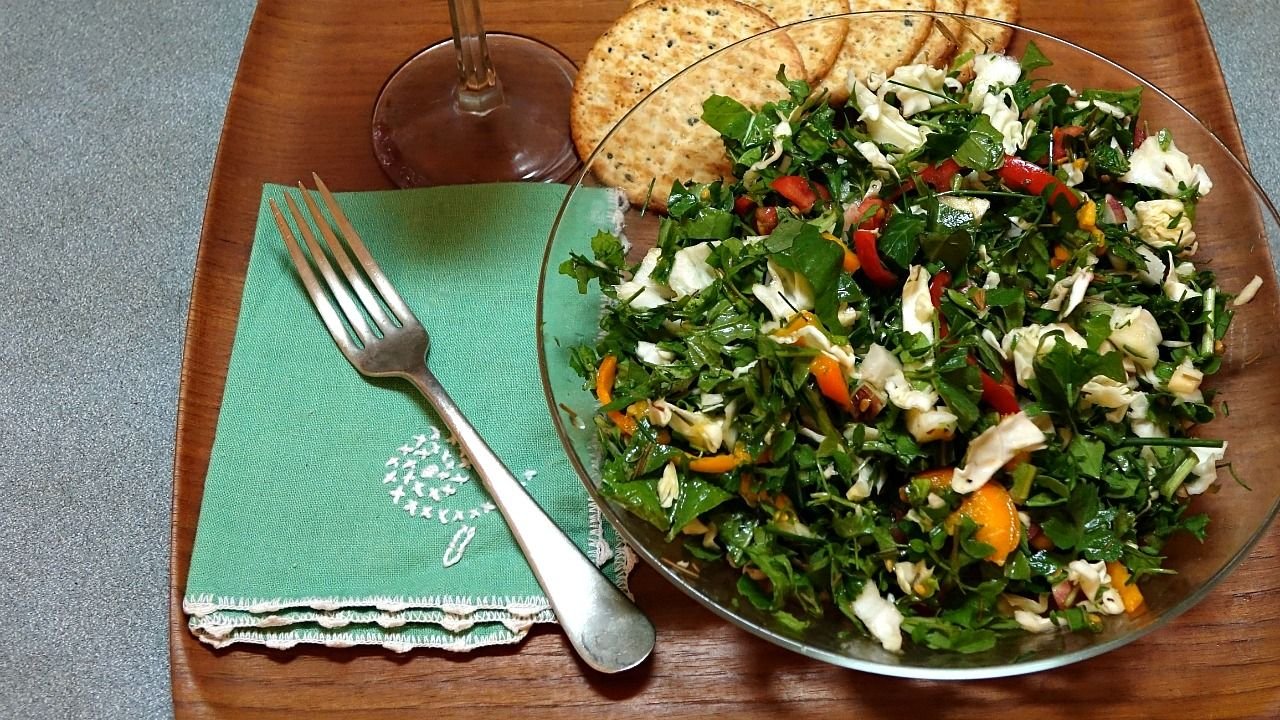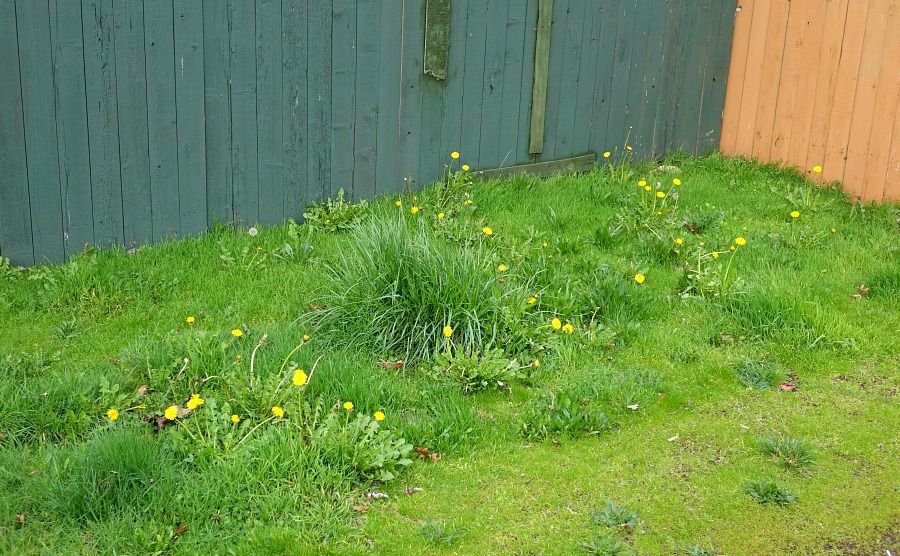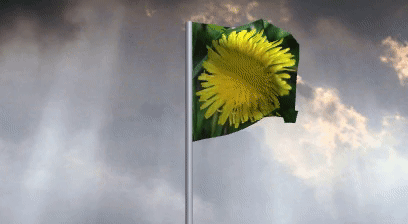Want to eat great-tasting, free, and healthy salads this spring? Eat weeds! Here are 7 tips that I use for making great weed salads in the spring.

Weeds are some of the earliest plants to green up and start growing in the late winter and early spring. That's one of the reasons they are weeds! Not all weeds are good to eat, of course. But even in the earliest spring, when the ground still looks brown and barren, or the grass is just getting green, there are some great edible weeds waiting to be noticed and put into our salads! :D
A Moment of Appreciation
Salads are such a great way to eat healthy and vegan! I will be posting wild salads all spring -- they are so delicious and full of life. Thank you, @heart-to-heart, for bringing back the #veganwednesday contest. Thanks, @woman-onthe-wing for the #makeithealthy tag. I appreciate @lenasveganliving's #FruitandVeggiesMonday tag and contest, too. And thanks to all the other Steemians that post with these tags. Each of you inspire me to focus more on plant-based food and healthy eating! I encourage you to enter the Steemit Iron Chef contest run by @progressivechef, too. So far, the featured ingredients have all been plants!
Tip 1 - Pick From Safe Places
Nobody wants to eat food from places that have been contaminated. I don't pick from places that have been sprayed by weed killer. Or even lawn fertilizer, because it might be the "weed and feed" kind. I don't pick from the downhill slope of any road, only the upslope - and near the right-of-way line, not along the pavement. And I don't pick from building foundations because so many are sprayed with long-lasting pesticides to prevent termite problems.

Even in cities, there are a lot of good places to safely pick weeds! If the soil is good enough for food gardening, then it's good enough for eating weeds.
Tip 2 - Pick Clean. Pick Organized.
Weeds in the late winter and early spring are small. It's easy to get other plants mixed in without paying close attention. I keep each kind of plant separate, in bags or at least in separate piles in my foraging basket. That way, when I get to the kitchen, it's easier to see if I picked something I didn't really mean to.
.gif)
.gif)
Tip 3 - Use A Variety of Plants
In the early spring, no one kind of plant will be producing enough for a whole salad. So the more kinds of edible weeds you include, the easier it is to get a big salad. And I personally think the more kinds of weeds that are in a salad, the more interesting the flavors are, too. And that can make tip #4 even more important!
.gif)
Tip 4 - Know How to Identify Young Plants
Little, young weeds can look different than when they are bigger and older. So it’s important to be able to identify each kind of weed when it is young and tender! But many guidebooks and online sources focus on older plants. Some of the weeds that I think are easiest to identify even when they are small are the dandelion, curly dock, cleavers, bittercress, narrowleaf plantain, and wild chives. These are pretty hard to mistake! I'll post about each of these plants, so stay tuned!
.gif)
Tip 5 - Pass Over Poor Plants
In the late winter and early spring, not all plants have started putting on new growth. They are not worth picking for a salad, even if they show some green parts. They will be tough and lack that spring vitality that provides so much good flavor.
.gif)
Tip 6 - Wash Well!
In the late winter and early spring, the weeds are growing close to the ground. And there's often bare soil, too. So the plants can have a lot of grit and mud! These little plants need to be washed off really well!
.gif)
Tip 7 - Chop Into Tiny Pieces
To mix the flavors in the salad, cut those weeds into small pieces. I chop mine up really fine! Sometimes I add non-weed things, too, like cabbage or kale, but not too much! I like to let the flavors of the weeds come through. Spring weed salads really taste great and are worth eating!
.gif)
Your Reward? Enjoy That Wild Weed Salad!
I don’t use a lot of dressing on these salads, because the plants are so flavorful. My favorite salad dressing is a simple balsamic vinaigrette – I often use a balsamic vinegar that I make from spruce tree needles.

What Do You Think?
With these 7 tips, there’s a lot of good eating out there! Weeds can be real food for regular people!
- Are you enjoying any wild plants in salads this spring?
- Which of these tips are the most challenging for you?
- Do you have any tips to add to this list?
- Are you interested in foraging - or becoming a better forager?
- Do you know a forager that lives near you?
Here are my posts that focus on foraging skills: Eat Those Garden Weeds: Two Strategies for Great Garden Weed Eating // 15-Minute Salads from Weeds, Tree Leaves, Flowers and Seeds
Here are my vegan Wild Salad posts that have identification quizzes in them - test your skills: An Early Spring Homestead Weed Salad // Wild, Wild Salad - 19 wild plants // Wild Homestead Extravaganza Salad - 25 wild plants and Shaggy Parasol mushrooms // Paleo Winter Weed Salad - 15 wild plants // Another Paleo Winter Weed Salad - 15 wild plants
Here are more vegan Wild Salad posts that I hope inspire you to get to know the weeds and edible plants around you: Free Hotel Salad - Wild Style! // Another Free Hotel Salad - Wild Style! // Grilled Beets Wild Style with Spruce Tree Balsamic Vinegar, Mallow "Cheesewheels", and Strong Greens
I eat a lot of wild plants and show you how, because I believe that we can all have lives that are richer, more secure, more grounded, and more interesting by getting to know the plants and the land around us – in our yards, our parks, and our wild places.
Plant List
- Dandelion - Taraxacum officinale
- Curly dock - Rumex crispus
- Cleavers - Galium aparine
- Chickweed - Stellaria media
- Wild field mustard - Brassica rapa
- Common mallow - Malva neglecta
- Elephant garlic leaves - Allium ampeloprasum
- Wild chives - Allium vinale
- Cat's-ear - Hypochaeris radicata
- Bittercress - Cardamine hirsuta
- Hedge mustard - Sisymbrium officinale
- Spearmint - Mentha spicata

